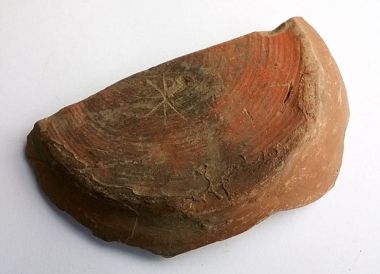Ancient pot fragment with Christ symbol shows Christians lived in London as early as the 4th century

How did Christianity spread across London, the capital city of the United Kingdom? The answer to this question that has baffled historians for centuries now lies on an ancient pottery fragment.
Volunteers at the Museum of London's Archaeological Archive recently discovered significant markings on the piece of pottery, which was originally excavated in 1970 at Brentford High Street.
"At first we noticed there was some sort of mark on the pot and then quickly realised the significance of what we had," Archaeology Collections Manager Adam Corsini told CBN News.
The artefact, believed to have been used during the 4th century, has a very striking symbol: a monogram of a chi (X) and rho (P), the first two letters of the Greek word "Christos," meaning Christ.
"Christian symbols from the Roman period are rare, especially from sites within Londinium's surrounding Hinterland, which includes moder Brentdor, and there are only a few examples within our collections relating to London," Corsini added.
The archaeologist explained that this significant discovery showed that Christians already lived in London, or Londinium at that time, as early as the 4th century.
"Although we can't say from one object that Roman London and its Hinterland were practicing Christianity, it does suggest that Christians were at least present at some point in 4th century Roman Brentford," Corsini said.
Roy Stephenson, head of Archaeological Collections, added that six other examples of Christian symbols were found on Roman artefacts unearthed in London.
Although no Roman Church was ever founded in London, these markings on the artefact strongly indicate that Christianity was many of the religions followed by residents of Londinium, according to Stephenson.
"London was a port with new ideas coming in, not just goods like olive oil and wine. Ideas permeated from London to Brentford, one day's journey away at the time," he explained.











